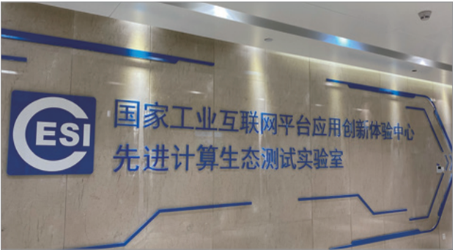2022 Review of Urban Green Low Carbon Scene Demonstration Base in Eight Cities(Part 1)
2022 Review of Urban Green Low Carbon Scene Demonstration Base in Eight Cities(Part 1)
“2023 Urban Green Low Carbon Scene Demonstration Base” Application
At the 2022 Carbon Peak and Carbon Neutrality Forum and the 10th Shenzhen International Low Carbon City Forum, the Green Carbon Scene Demonstration Bases in eight major cities were awarded. We deeply felt their positive impact on driving urban innovation and green development.
In the coming year, we will continue to host the Demonstration Base selection activities, which is an important measure for sustaining innovation and promoting sustainable development. We sincerely invite everyone to stay tuned. Soon, we will release information on the WeChat Official Account and Official Website for the application of “2023 Urban Green Low Carbon Scene Demonstration Base”, let us witness a new chapter for outstanding bases together.
Let us look forward together and strive to create a better future!
2022 Review of Urban Green Low Carbon Scene Demonstration Base in Eight Cities(Part 1)
SE Environment Nanshan Energy Ecological Park

Nanshan Energy Ecological Park is a comprehensive ecological park established by the municipal state-owned enterprise, Shenzhen Energy Environmental Protection Co., Ltd, it integrates production, education, publicity, research, and tourism and serves as a “no-walls” science education base. It sets an example for industry coexistence and avoidance effects and serves as a training base for Shenzhen's municipal solid waste treatment, an environmental education base, and a social science popularization base.
Phase I and II of Nanshan Energy Ecological Park cover a total area of 88,000 square meters, with a daily capacity to process 2,300 tons of household waste. It achieves harmless incineration treatment for all of Nanshan district's household waste and surpasses the environmental standards of the European Union, following Shenzhen Standard SZDB/Z233-2017. The Nanshan Energy Ecological Park holds the highest “AAA” rating for domestic harmless incineration treatment enterprises and serves as a branch venue for the Shenzhen Science and Technology Fair. It has contributed significantly to Shenzhen's urban environmental sanitation.
The park's design emphasizes de-industrialization, and it incorporates a Circular Regeneration Art Museum. This innovative approach transforms waste incineration facilities from being “avoided by neighbors” to “neighbors benefiting”. The art museum covers an area of approximately 4,400 square meters and encompasses the entire process of waste treatment. The museum's interactive exhibits provide a clear understanding of the waste incineration process and the technological transformation of waste into valuable resources. Through the fusion of industry and art, it presents a unique ecological aesthetic to the public. At the nearly 80-meter-high circular Sky Bar, visitors can savor delicious coffee while enjoying breathtaking views of the boundless sea. This embodies the environmental concept of “building a factory, creating a park “ contributing to Shenzhen's “zero waste city” and “30/60 “ carbon peak and carbon neutrality strategy.
Future Complex

The Future Complex is located in the International Low Carbon City Center Campus in Longgang District, Shenzhen. The Low Carbon City is a flagship project for Sino-European sustainable urbanization cooperation and was awarded the Sustainable Development Planning Project Award “Paulson Prize” in 2014. The Future Complex is the first international cooperative project in the Low Carbon City initiative.
The Future Complex is a research and development base designed and constructed independently by the Shenzhen Institute of Building Research Co,. Ltd. It is located on the shores of Butterfly Lake in the core starting area of the International Low Carbon City, covering an area of approximately 11,000 square meters. It is the first land parcel in China with carbon emission benchmarks available for transfer. It is one of the two demonstration projects in the energy-saving building sector under the framework of the China-U.S. Clean Energy Research Center signed by President Xi Jinping and President Obama.
China Emissions Exchange(Shenzhen)

China Emissions Exchange. (referred to as “CEE”) was established in September 2010 with the approval of the Shenzhen municipal government. It seized the opportunity to be listed as one of the first low-carbon pilot cities and carbon trading pilot provinces and cities in China to launch the China’s first carbon trading market. The transaction volume quickly exceeded RMB one billion, and it maintained its turnover rate keep first nationwide for several years. After over a decade of development, Shenzhen CEE has grown into a professional institution with multiple identities, including an exchange, research institute, think tank, training center, and laboratory. It has become one of the most influential exchange brands in the field of green and low-carbon areas. The base’s building area is 2,734.68 square meters and includes one training room and five conference rooms In recent years, it has hosted five low-carbon-related public welfare promotional events, four meetings on carbon trading market capacity building, and six area capacity building training activities. All these activities have received unanimous praise from the participants, and the center has received around 200 groups with nearly 780 visitors for exchanges as a “city low carbon conference room”.
The Demonstration Base of Green and Low-carbon Standardization Scenarios for Industry, CESI Shenzhen

The Shenzhen Cesi Industrial Green Low Carbon Standardization Scene Demonstration Base falls within the cross-empowerment category of industrial and information technology with carbon peak and carbon neutrality. It focuses on green industrial development in the new era, conducts activities around the convergence of “high-end, intelligence, and green”, and promotes the organic integration of digitalization, intelligence, and the “Carbon Peak and Carbon Neutralization” goal. Using standardization as a means, it explores low-carbon pathways in the industrial field, focusing on popular digital technologies such as industrial internet, 5G, digital twins, blockchain, and popular application areas. It proposes new ideas, new paths, and new measures to create a new integrated experience center for green manufacturing + intelligent manufacturing and industrial internet + green and low-carbon.


